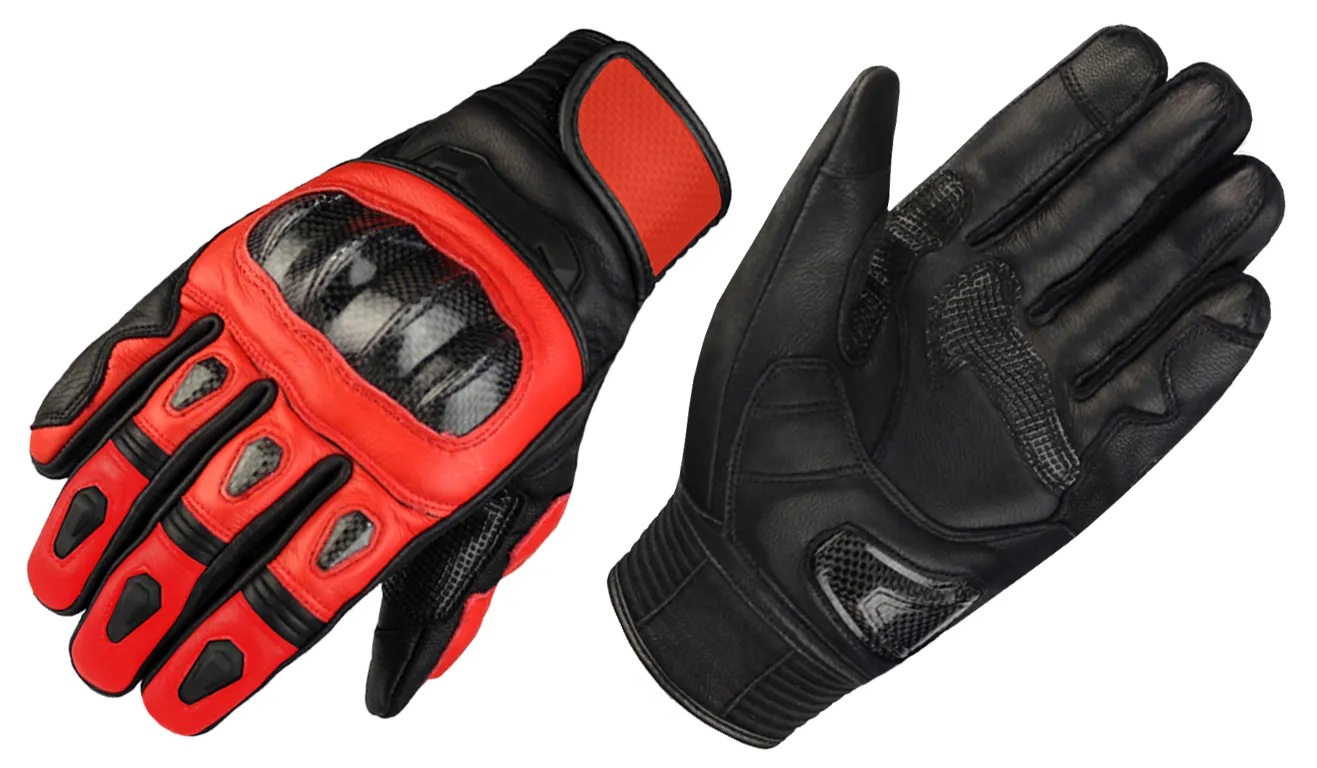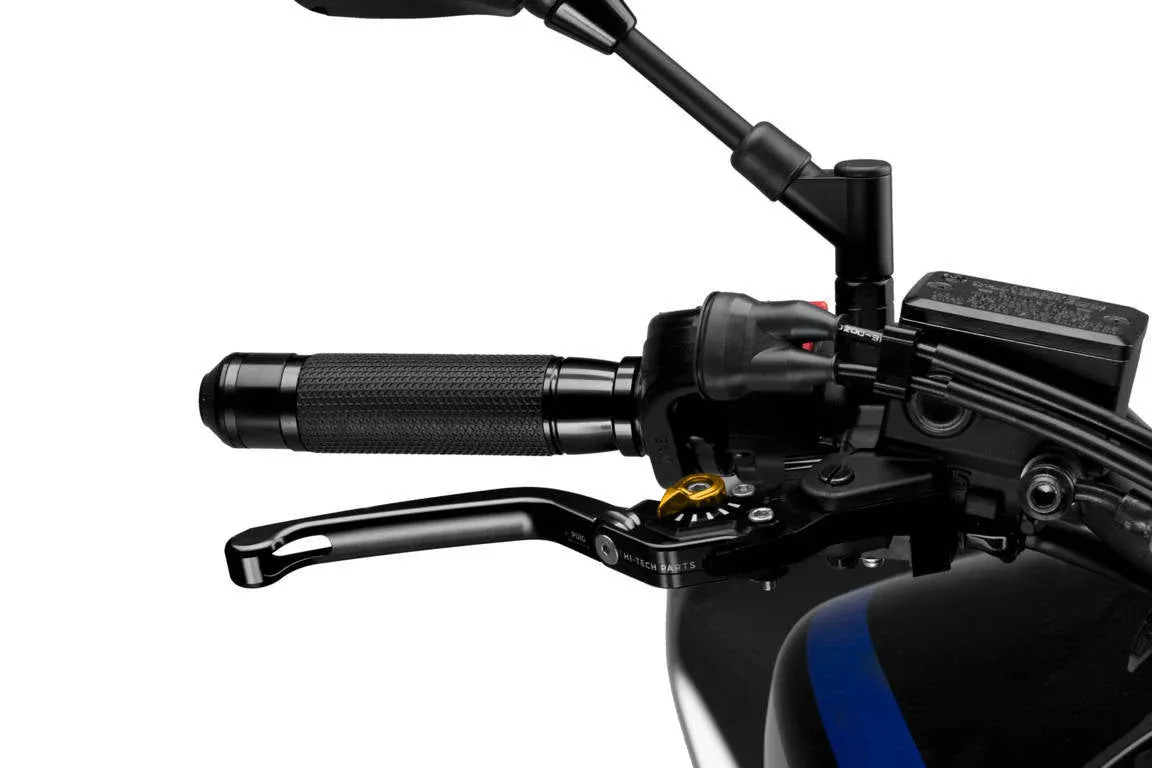The safety of motorcycles is based on the skills of the riders, road awareness, and maintained equipment. A front brake lever is another important component that many riders overlook, yet it is used along with helmets, jackets, and boots. A poorly adjusted lever can compromise your grip, delay reaction times, and even increase fatigue on long rides. On the other hand, a properly set-up lever gives you precise control, smoother braking, and greater confidence.
In this guide we discuss the importance of the front brake lever, the reasons why it should be adjusted to be comfortable and safe, and the benefits of using motorcycle gloves to enhance the braking performance.
Why is the Adjustment of the Brake Lever Important?
Your front brake gives you almost 70 percent of your braking force, and any little misalignment in it can have a huge impact. When the lever is too high or too low, you pull on your wrist. When it is too long, you find it difficult to catch in case of an emergency.
Proper adjustment ensures:
- Quicker response to braking.
- Long rides are more comfortable.
- Less fatigue in your hands and wrists.
- Stable control, particularly on wet or rough roads.
Combine this with protective motorcycle gloves, and you have a safer, more responsive braking system.
Step-by-Step Guide: Adjusting the Front Brake Lever

Get the Right Tools
Before you begin, gather:
- screwdriver or Allen wrench (depending on your bike).
- A clean rag.
- Your motorcycle gloves (needed to test grip).
Find a Comfortable Position
- Ride your motorbike in a natural natural riding posture.
- Reach out and point with your hand and make a normal opening and see where your fingers are in relation to the lever.
- In case the lever is unadjusted, high, or low, it should be adjusted.
Adjust the Lever Angle
- Unscrew the clamp bolts which hold the lever on the handlebar.
- Turn the lever up or down until your arm is straight with the wrist and this will help to reduce strain.
- Bolts should be tightened, but not too tight to cause damage.
Set the Lever Reach
- A dial or screw is located close to the lever pivot on most modern bikes.
- Press the lever to move it either nearer or further away than the handlebar.
- Shorter is also better on riders with smaller hands or thickened gloves.
- Longer reach is suitable for riders with bigger hands.
- Til until your index and middle fingers drag the lever without overstretching it.
Test the Free Play
- Squeeze the brake lever softly.
- It should have just a little free play before the resistance sets in. Too tight and the brakes may drag, too loose and the brakes may be slow.
- Most bikes suggest 2-5mm of free play- see your manual to be sure.
Test with Motorcycle Gloves
- Wear your gloves and retest the lever.
- Gloves make the hands bulkier and what would have been comfortable without gloves might be tight with gloves.
- Riding all year round with varying gloves, summer mesh and winter insulated, you should make a slight adjustment to the heavier ones. You’ll need extra clearance.
Road Test
- Go out on a short ride on your motorcycle.
- Begin with low-speed braking, and then gradually go to normal riding speeds.
- Ensure that your fingers are free to reach and operate the brakes without any problems and there is no strain in the wrist.
Problems and Fixes Related to the Front Brake Lever
- Spongy Lever: There might be air trapped in the brake lines–bleed the brakes.
- Extra Hard Lever: Cables or calipers can be worn-out and require maintenance.
- Lever not sliding easily: Rub oil at the pin.
- Lumpy braking action: Brake pads can be worn out – check and replace.
Why Motorcycle Gloves are Necessary in Terms of Grip and Safety?

Although a properly balanced lever is essential, the gear you use is important as well. Motorcycle gloves do not only serve the purpose of comfort, but they also have a direct effect on the braking performance.
Here’s how they help:
- Better grip: Palm inserts made of leather or silicone rubber prevent hand slipping in rain or sweat.
- Vibration damping: Gloves dampen vibrations of the handlebar and minimize fatigue and stability of the hands.
- Abrasion resistance: Gloves prevent road rash and hand injuries during a fall.
- Temperature regulation: Insulated gloves allow fingers to be sensitive even during winter; ventilated gloves allow fingers to be dry even during summer.
- Stable feedback: Gloves offer both protection and touch, allowing you to control the brake pressure precisely.
The gloves are safe and comfortable when used together with a well-adjusted lever.
Additional Advice on Improved Brake Control
- Always front brake with two fingers (index and middle), this is more controllable.
- Clean brake parts and keep them oil or dirt-free.
- Change levers that are worn out; bent or broken levers are unsafe.
- Adjustment of lever when changing new grips or handlebars.
Conclusion
The front brake lever in your motorcycle might be tiny, yet it has a large part to play in safety and performance. A properly balanced lever alleviates fatigue, enhances control, and confidence on each ride. Combine that with the right motorcycle gloves and you will have a better grip, quicker response, and a general protection.
You should not underestimate the influence of little details. After a few minutes of tuning and the appropriate equipment, you will be able to ride safer, brake smarter and have a smoother ride every time you get on the road. Enhance your safety equipment with high quality motorcycle gloves and accessories at AliWheels. The more grip, the safer ride.









